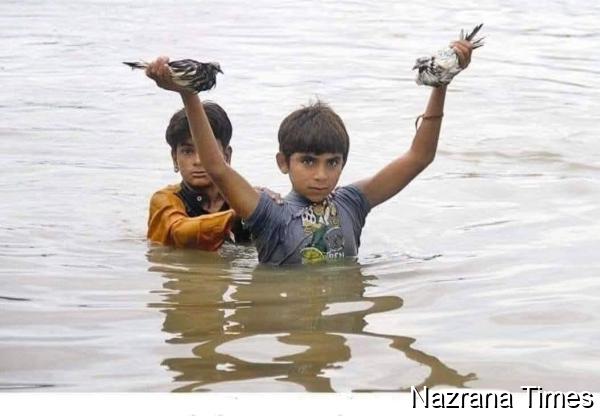Historic Floods Hit Punjab: Multan, Lahore, and Other Cities Struggle as Relief Efforts Continue
- Internationl
- 01 Sep,2025

Punjab, Pakistan, 1 September 2025 Ali Imran Chattha
Punjab, Pakistan’s most populous province, is grappling with one of the worst flood disasters in its history. The Sutlej, Chenab, and Ravi rivers have reached dangerous levels, submerging both rural and urban communities. Authorities warn that this year’s monsoon floods could be the most destructive in decades, displacing millions and destroying livelihoods.
Multan and South Punjab: Frontline of the Disaster
Multan remains one of the hardest-hit districts, with the Chenab River swelling beyond control. Authorities have taken drastic measures, including controlled breaches of embankments with explosives to divert water away from the city. Drones are being used to monitor water movement in low-lying areas, and large-scale evacuations are underway. Residents report severe shortages of food, animal fodder, and basic medical care.
Nearby districts including Jhang, Vehari, and Chichawatni have also been severely affected, with entire villages submerged.
Lahore, Gujranwala, Wazirabad, and Jhelum: Urban Flooding Adds to Misery
In Lahore, persistent heavy rains combined with rising river levels have triggered urban flooding, leaving main roads waterlogged and paralyzing transport. Hospitals such as Jinnah Hospital have reported water leakage and structural strain.
In Gujranwala and Wazirabad, flash floods and breaches in protective bunds have inundated residential areas, displacing thousands of families. Jhelum is also under high flood threat, forcing mass evacuations in surrounding villages.
Scale of Devastation Across Punjab
Over 2,200 villages submerged
2 million people affected
At least 33 lives lost
More than 700,000 displaced to safer grounds
500+ relief camps established
Relief and Rescue Operations
Rescue 1122, the Pakistan Army, and local authorities continue rescue operations. Livestock rescue is also a priority, with over 400,000 animals saved so far.
Government Response
The Punjab government has declared a state of emergency. Provincial ministers are touring flood-hit areas, distributing food and relief supplies, and supervising evacuations. The Chief Minister has emphasized that protecting lives, livestock, and embankments is the top priority. Coordination with federal agencies and international partners is ongoing to secure additional aid.
NGOs and Political Parties Join Efforts
Alongside the government, NGOs and political parties are mobilizing large-scale relief operations:
Khidmat Foundation (Jamaat-e-Islami) has established medical camps, food distribution centers, and volunteer rescue networks across South Punjab and Lahore Division.
All Pakistan Muslim League (APML) has dispatched aid trucks carrying rations, drinking water, and tents, assisting in evacuations.
Other local NGOs and charities have organized community kitchens, boat rescues, and free medical treatment.
Student and youth organizations are also collecting donations and forming volunteer teams to assist on the ground.
Challenges Ahead
Despite ongoing relief efforts, overcrowded shelters pose a high risk of waterborne diseases such as diarrhea, malaria, and skin infections. Agriculture has suffered catastrophic losses, with thousands of acres of farmland destroyed, threatening food security in the coming months.
Experts emphasize that while immediate rescue operations are urgent, Pakistan must invest in long-term flood management infrastructure, reservoirs, and climate adaptation to protect vulnerable communities from recurring disasters.
Conclusion
From Multan to Lahore and Gujranwala to Jhelum, Punjab is under siege from historic floods. Government, NGOs, and political parties have provided temporary relief, but the sheer scale of devastation calls for coordinated national and international action. The 2025 floods are a stark reminder of Pakistan’s climate vulnerabilities and the urgent need for systemic solutions.
Posted By:
 TAJEEMNOOR KAUR
TAJEEMNOOR KAUR


Leave a Reply